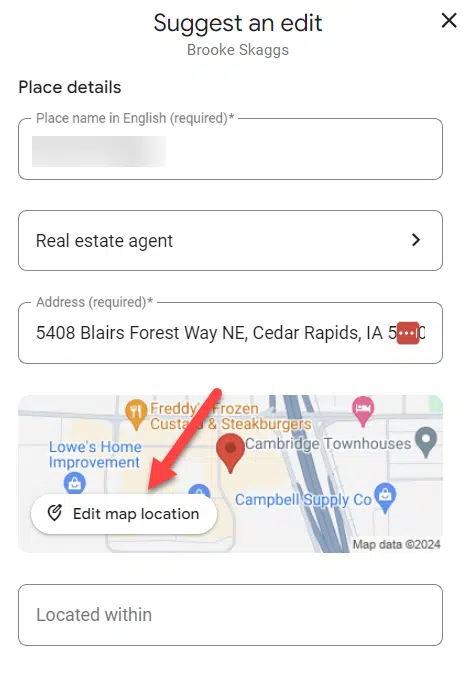Figuring out the best SEO strategies for dentists can be tricky. To outshine your competitors, earn new patients, and build a solid brand presence, follow basic SEO best practices such as link building. Link building is fundamental to ranking high on Google Maps and general search results. A lot of link building happens organically, but there are several ways you can boost your chances of getting inbound links. In this dental guide to link-building, your practice can reach new heights, soar above the competition, and see new growth in no time.
Internal links direct users back and forth between different pages within your own website. External links direct users to your website from a completely different website. These are also called backlinks, and they are highly sought after in the world of dental SEO. Link building refers to strategies intended to generate more backlinks to your dental website.
Just make sure your dental website passes the ugly test before focusing on a link-building campaign. If your website is outdated, slow, non-HIPAA compliant, or suffers from other major pain points, there’s really no point in trying to get people to visit it. You need an SEO-optimized dental website design.
These seven strategies can help boost your online presence and generate more backlinks. With these goals in mind, you’ll be reigning at the top of Google SERPs (search engine results page) in no time.
1. Sponsor local businesses
Charity events: Consider sponsoring a charity event such as a 5k or a food drive with a nonprofit organization in your community. Encourage the organization to post about the event online with a link to your website as one of the sponsors.
PTA events: If you’re a pediatric dentist, try working with local grade schools to sponsor PTA events or fundraisers. School emails and announcements about the event will likely feature a link to your dental website.
Local business fairs and events: Outside of charity and school events, there are always plenty of opportunities to sponsor other local businesses. Whether it’s a job fair with the city, a small business organization, or a community celebration, don’t hesitate to throw your hat in the ring as a sponsor to increase link building.
One of the best ways to get your practice name out there and increase link building is to work with local businesses. As you partner with local businesses, they’ll typically mention your practice online and include a link to your website. Reach out to restaurants, community organizations, schools, and other health and wellness centers to see how you can work with them.
2. Get listed in directories
Another great way to work on link building for your dental practice is to submit your practice to relevant online directories. These are just a few examples of online directories that focus on dentistry and healthcare to consider: American Dental Association, Healthgrades, Yellowpages, Smile Guide, Open Care, ZocDoc, and Denta Quest. Being featured on multiple directories can also boost your Google Maps rankings, which is a great way to find local patients.
3. Create content worth linking to
The best way to generate organic link building is to create “linkable” content. SEO blogging is a great way to create inbound links, especially when you take the time to create authoritative, original content. These seven complimentary cosmetic dental blog templates can help you get started, or you may want to get help from a dental SEO marketing company.
Infographics are also highly linkable because a lot of people are visual learners. Try hiring a graphic designer for a one-off infographic illustration to include in your dental website or dental blog and see how many backlinks it generates.
4. Focus on your social media presence
This might sound strange, but creating a strong social media presence can also help your link building efforts. By posting often, you can increase the number of inbound links. Participate in giveaways with other businesses, ask patients to review your practice on Facebook, and post regularly to drive more traffic to your website. You can also share links to blog posts and other pages on your website to boost your SEO. By including the name, phone number, and location of your practice across your social platforms, you can also boost local SEO and target specific audiences.
5. Guest blog with relevant sites
Guest blogging is another tried-and-true way to increase inbound links to your dental website—as long as it’s done correctly. Guest posting too often with poorly written or keyword-stuffed content can actually bring down your SEO, according to Google. Try to guest blog with websites that are relevant to your field, and create useful, original content for them. These free blog templates can help you as you’re writing guest posts.
6. Reviews and testimonials for off-site SEO
Off-site SEO refers to any efforts to improve your rankings outside of your actual website, and it can be a great way to increase link building. When you leave testimonials of products and services on other websites, your name and company accreditation link back to your website.
Patient reviews can also help increase backlinks if they include a link to your practice on review sites such as Google, Facebook, and Yelp. It’s also super important to register your Google Business Profile (GBP) and keep it updated for overall SEO. This dental SEO guide talks more about optimizing your GBP.
7. Outreach efforts (asking for backlinks)
If all else fails, you can reach out to companies and organizations and request backlinks to your dental website. This can be done strategically in a few ways:
Find broken backlinks from your competitors: Use a service such as Semrush’s Backlink Analytics tool to find broken backlinks to your competitors’ websites. Once you’ve identified broken links, you can ask the website they’re featured on to replace the broken link with a working link to your practice instead. For example, if a dental magazine from your state quoted one of your competitor’s blog posts about flossing, but the link is no longer active, you could reach out to the magazine with a similar blog post of your own and ask if they would like to swap.
Use HARO and similar resources: Help A Reporter Out (HARO) is a website where journalists can pull information from and find credible sources. You can list your practice as a resource that is willing to provide insights any time someone is working on a story about dentistry or an adjacent topic.
Ask for credit on unlinked mentions of your practice: Sometimes, half of the work is already done when it comes to requesting a backlink. If a publication or business has referenced your practice online but failed to provide a link to your website, you can reach out and provide a link to your home page or to a relevant blog post.
Outsource your outreach efforts: If you don’t have time to reach out to various outlets to request backlinks, hiring a dental marketing firm is a great way to outsource this SEO practice. Choose a dental marketing company that understands SEO and have them reach out to websites on your behalf.
How to rank higher and see growth faster
There are a lot of ways to build links to your practice’s website, but this isn’t the only SEO strategy you should be focusing on. In addition to link building, your practice should implement these three optimization steps to rank higher on Google and Google Maps, and find ways to improve your dental website as a whole. The more effort you put into SEO, the faster you’ll see your practice grow.
FAQs
How can a dentist increase their rankings on Google?
Improving your dental practice’s ranking on Google requires a multifaceted approach. Start by refining your Google Business Profile, the listing that appears on the Google map. This is often the first touchpoint for potential patients searching for new dentists. Coupled with this, it’s crucial to actively accumulate Google reviews. These not only influence Google’s ranking decisions but also play a pivotal role in swaying potential patient choices.
The speed of your website is another vital element, with swift load times greatly favored by Google’s ranking algorithm. This can be achieved through meticulous site code optimization and top-tier hosting services. Custom copywriting, tailored to your practice’s unique offerings, and an active, custom dental blog, showcase your expertise and keep your content fresh and relevant.
Finally, employing effective linking strategies, both within your site and from external sources, can greatly enhance your site SEO. Skillful linking bolsters credibility, enhances user experience, and provides a clear pathway for search engine crawlers, collectively elevating your online visibility.
Does AI copywriting negatively affect dental SEO?
No, AI copywriting does not negatively affect dental SEO. In fact, AI copywriting can be a valuable tool when crafting content for your dental website. Google doesn’t inherently devalue content generated through AI. However, it’s essential to approach AI-generated content with a discerning eye. It’s not advisable to simply copy and paste content from an AI tool such as ChatGPT without review. Ensuring the tone is appropriate for your audience and the content is factually accurate is paramount. AI tools, while sophisticated, can sometimes generate “hallucinations,” or content based on its predictive algorithms that may not be entirely accurate. Therefore, always fact-check and refine AI-generated content to ensure it aligns with your dental practice’s values, expertise, and factual correctness.
What’s better, SEO or Google ads?
Choosing between dental SEO and Google ads is akin to deciding between renting a prime spot or buying it for long-term value. Google ads operate on a rental model. Think of it as leasing space on Google’s front page. The key benefits are immediacy and visibility. By investing in ads, dental practices can quickly attract attention and draw in patients, making it especially useful for promotions, new services, or when quick results are needed. However, the costs can be high, and your visibility disappears the moment you stop paying for ads. In essence, while ads offer rapid results, they don’t provide lasting value.
Conversely, SEO is more of a long-term investment. It’s like purchasing real estate on Google’s front page. The process is gradual and requires consistent effort and patience. But the payoff is substantial. A well-optimized dental website can maintain high visibility without the constant expense of ads, creating enduring organic growth. Furthermore, a solid SEO foundation for your dental practice can enhance your practice’s online reputation and credibility. Neither SEO nor Google ads is inherently better than the other. Each offers distinct advantages depending on the objectives, budget, and timeline of your dental practice.
This article originally appeared in DE Weekend, the newsletter that will elevate your Sunday mornings with practical and innovative practice management and clinical content from experts across the field. Subscribe here.




